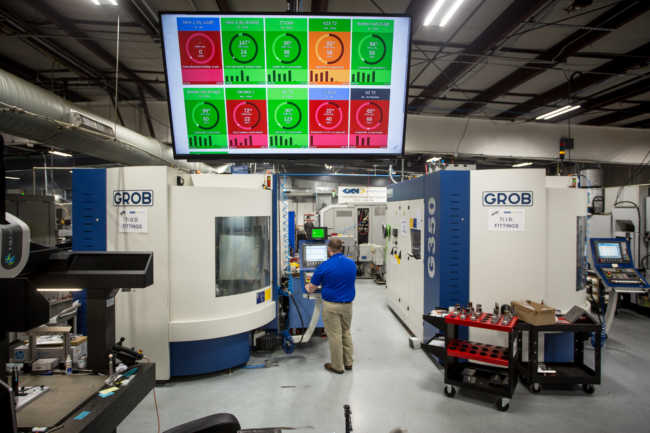Building a Successful Roadmap to IIoT Implementation
Having the right pieces in place, setting reasonable expectations, and a dedication to project initiatives may be the best roadmap to a succesful IIoT implementation.
Planning a Digital Transformation
We often talk to companies who have predictive and preventative aspirations but who still don’t have machines networked, the necessary IT infrastructure to capture and aggregate machine data, or the internal organizational resources required to decipher the data and implement continuous process changes. Thus, like any good action plan, it’s all about the preparation. Here are a few areas of focus for any company to consider when readying themselves for digital transformation.
Roadmap to IIoT Implementations
Organization
To understand what you are solving for, it’s essential firstly to be aware of what the problems are, and then to become capable of not just solving those problems but to ready ourselves for the greater problems in the journey ahead. Transformation requires buy-in at all levels, from the front office and on the shop floor, but it also requires internal leadership. It’s critical for manufacturers to recognize the important role organizational attributes play in long-term project success and begin discussions about how the odds of project success can be increased by evaluating organizational gaps. Ask yourself: Where do we stand now? Does your team have the right people in place to implement new technology? Are there project leaders capable of owning this project?
Communication
The information we need is available, but the hard part is actually applying it. Avoiding an “us vs. them” mentality is critical in this transition stage. It is vital to build trust between everyone involved in the manufacturing process so problems can be quickly identified, and new solutions can be effectively implemented as a team. Don’t let a lack of communication stand in the way of change. Ask yourself: Does your team have an environment capable of communication and applying process changes not just from the top down but from the bottom up?
Waste Reduction
Before you embark on our digital transformation journey, it’s important to get as lean as possible with your current capabilities. The goal of lean manufacturing is continuous improvement of production processes, while eliminating waste and cutting costs.
However, setting the stage for a lean process is just the first step; implementing a system that allows you to maximize your manufacturing productivity results will take your lean model to the next level. Ask your- self: Are we lean? Do we know what our top areas of waste are? Have we embraced lean manufacturing principles? How does Industry 4.0 impact lean manufacturing?
Tools
Digital manufacturing will transform every link in the manufacturing value chain, from research and development, supply chain, and factory operations to marketing, sales, and service. Having tools to measure your efforts, for designers, managers, workers, consumers, and physical industrial assets will unlock enormous value and change the manufacturing landscape forever. What tools are in your toolbox right now? What tools do we need to measure our success? What tools do we need to upgrade?
Digital Connectivity
In 2019, the cloud can be your best friend, and with security being better than most on-site solutions systems, the benefits are. Increasingly more companies are developing or moving their workloads to the cloud by the day, aiming to migrate everything onto the cloud over the next few years. This digitization of data will enable you to deliver competitive advantages in an ever-competitive landscape. Networking your machines and ensuring that all production data can be captured is one of the most essential capabilities for real-time analytics. Ask yourself: Are you ready to digitize our assets? Do you have the technical assets in place to capture and store the data?
Finally, once you’ve readied your company to start your journey, it’s essential to avoid the many pitfalls made by previous teams who were unable to move their IIoT implementations past POC.
Download for free the “Why Most IIoT Implementations Fail” white paper by Machine Metrics to find out more about:
- How serious are manufacturers about moving forward with IIoT implementations and what do their IIoT roadmaps look like?
- How to build a Successful Roadmap to IIoT Implementation
- How to start your journey
- The Roadmap To Digital Manufacturing Transformation
This is an excerpt from the Machine Metrics white paper.
Sorry, the comment form is closed at this time.




Pingback: Building a Successful Roadmap to IIoT Implementation | iotosphere - Internet of Things